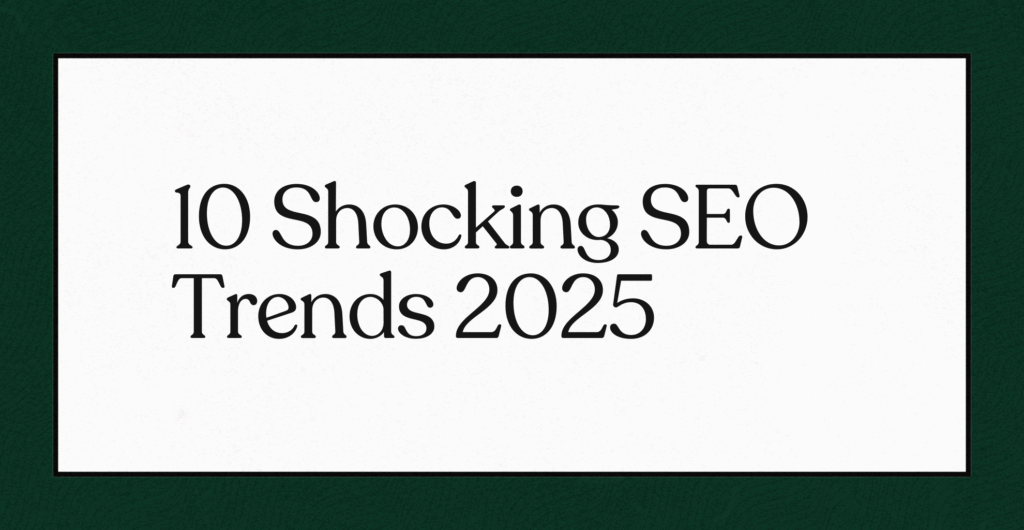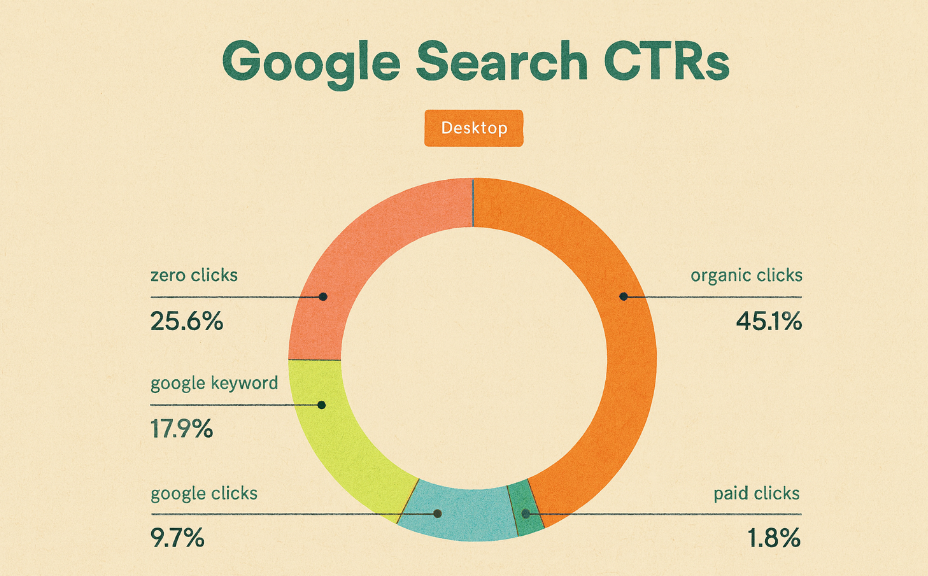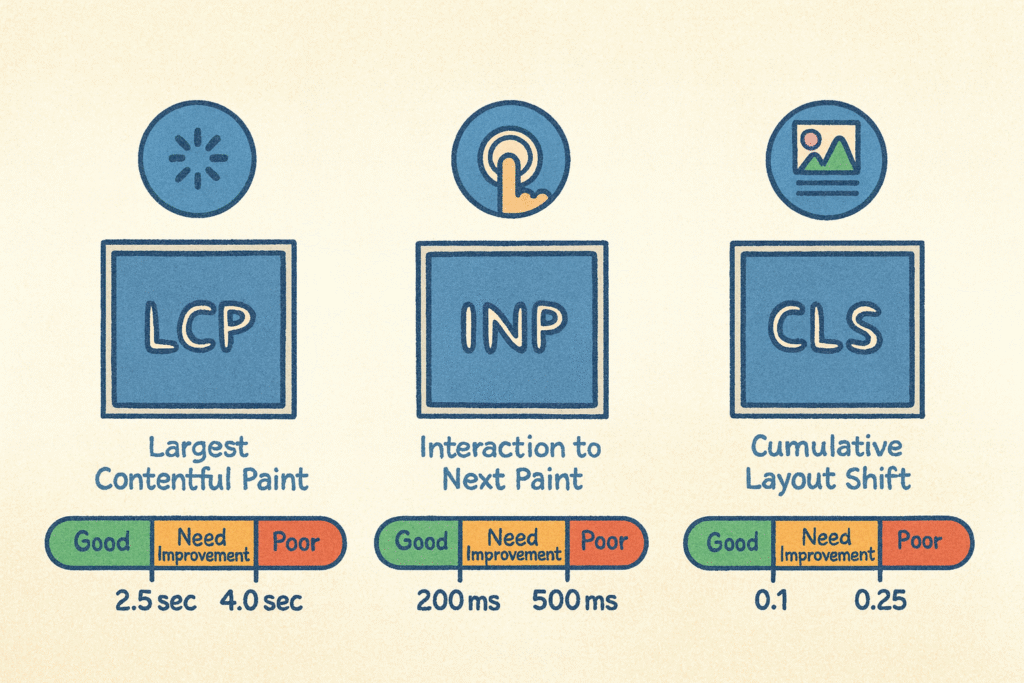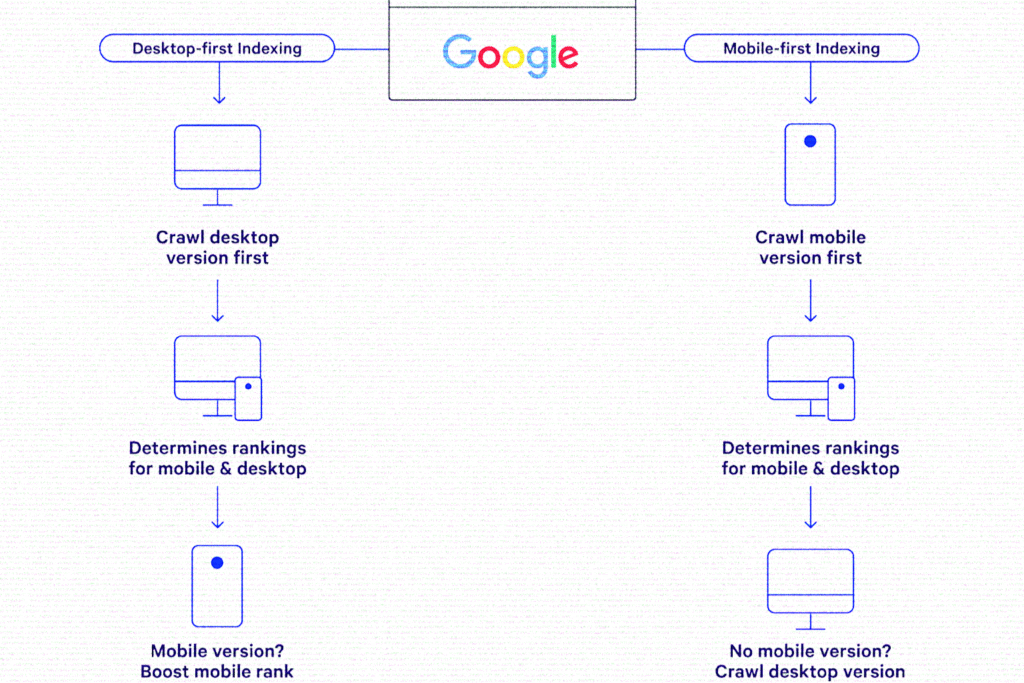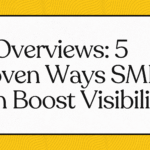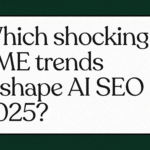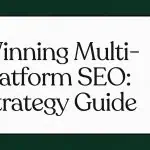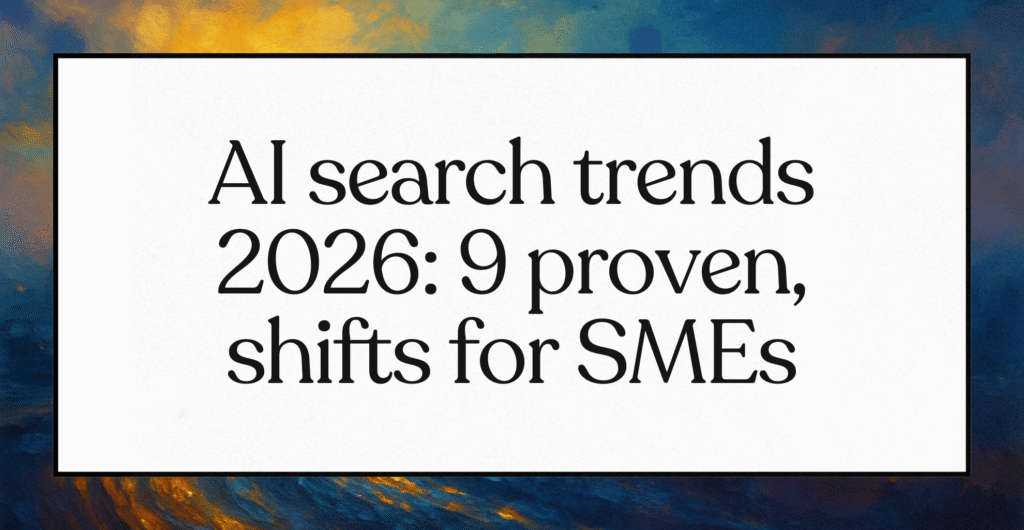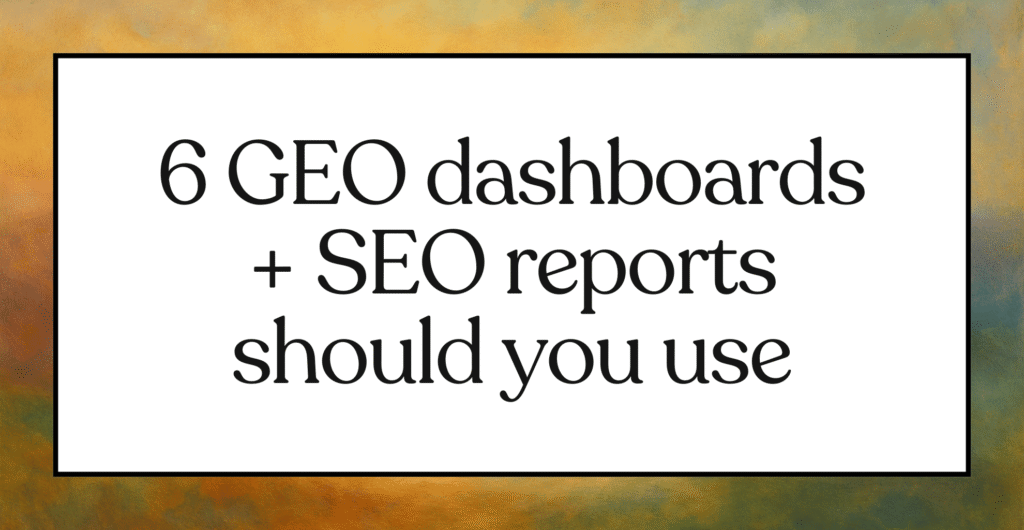What if the very rules of online visibility were rewritten overnight? The industry of SEO trends 2025 has undergone its most dramatic transformation since the inception of the internet. As we navigate through this year, digital marketers and business owners face unprecedented challenges: 60% of searches now result in zero clicks, Google’s AI Overviews appear in over 47% of search results, and traditional ranking strategies are becoming obsolete at an alarming rate. This seismic shift highlights why SEO trends 2025 demand immediate attention and strategic adaptation from anyone serious about maintaining online visibility.
The convergence of artificial intelligence, evolving user behaviors, and Google’s aggressive algorithm updates has created a perfect storm that is reshaping how businesses connect with their audiences. From the June 2025 Core Update that triggered widespread ranking volatility to the emergence of Generative Engine Optimization (GEO) as a critical discipline alongside traditional SEO, the rules of the game have fundamentally changed. Companies monitoring SEO trends 2025 closely are better prepared to navigate these disruptions, while those ignoring them risk rapid decline.
Ultimately, understanding SEO trends 2025 means recognizing how zero-click behaviors, AI Overviews, and GEO are rewriting search visibility strategies. Businesses that align with SEO trends 2025 not only adapt to Google’s algorithm shifts but also secure stronger positioning across AI-driven platforms. The winners will be those who act now, integrating insights from SEO trends 2025 into long-term digital strategies that prioritize both visibility and resilience.
The AI-Driven Search Revolution
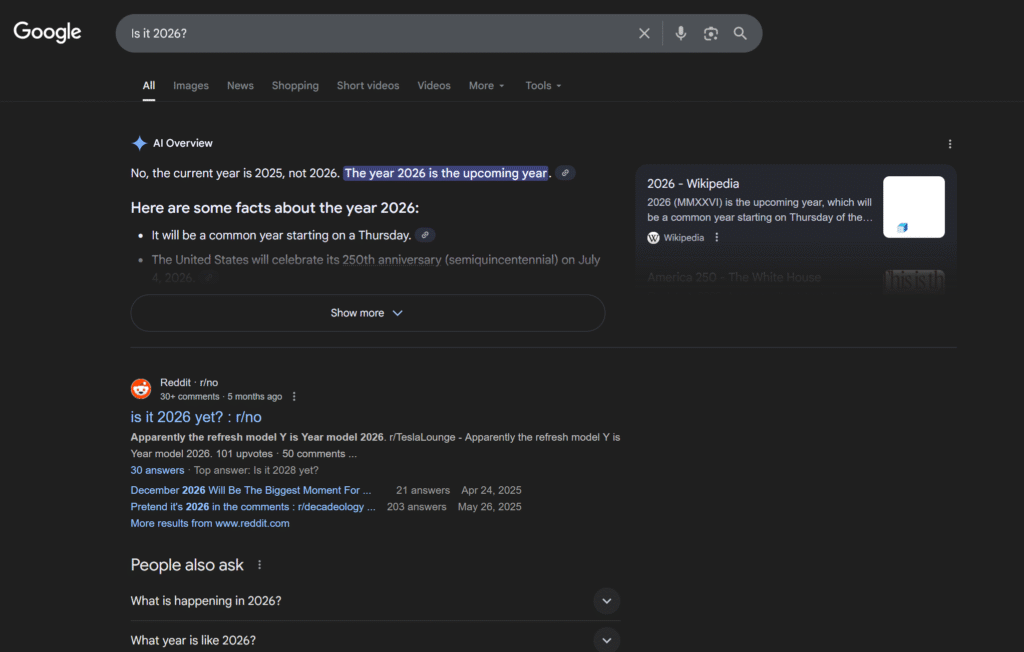
Google AI Overviews Dominate Search Results
The most significant disruption in SEO history has arrived through Google’s AI Overviews (formerly Search Generative Experience), which now appear in 47% of all search queries. Recent data from the Pew Research Center reveals that users who encounter AI Overviews click through to websites only 8% of the time—half the rate compared to traditional search results. This dramatic shift represents more than a minor algorithm adjustment; it’s a fundamental reimagining of how information is discovered and consumed online.
The impact extends far beyond simple click-through rates. Studies show that 26% of users who see AI Overviews end their browsing sessions entirely, compared to just 16% for traditional search results. This phenomenon is particularly pronounced on mobile devices, where 77% of searches result in zero clicks, forcing businesses to rethink their entire digital acquisition strategy.
African SMEs face unique challenges in this environment, as many AI systems are trained primarily on Western data sources, potentially limiting representation in AI-generated responses. However, businesses that optimize for entity recognition and structured data implementation are finding success in gaining AI Overview citations, even with limited resources.
The Rise of Alternative Search Engines
While Google maintains its dominance with over 90% market share, alternative search engines are capturing significant user attention. ChatGPT reached 10 million monthly mobile app downloads since its launch, while 31% of Gen Z users perform searches directly on AI platforms. This diversification creates both challenges and opportunities for businesses seeking comprehensive search visibility.
The key distinction lies in ranking factors: DuckDuckGo emphasizes privacy signals, Bing weights social media engagement more heavily, and vertical search engines prioritize industry-specific authority markers. Smart businesses are diversifying their search presence across multiple platforms, often seeing 15-25% additional traffic from non-Google sources when properly optimized.
For companies targeting African markets, this trend is particularly relevant as data sovereignty concerns and privacy regulations drive adoption of alternative search platforms. Businesses should establish presence on Bing Webmaster Tools, optimize for privacy-focused search engines, and consider industry-specific vertical platforms where their target audience may be searching.
Zero-Click Search Optimization
The era of zero-click searches has fundamentally altered the SEO paradigm. Current data shows 60% of all Google searches result in zero external clicks, with this figure projected to exceed 70% by the end of 2025. This shift from click-based to visibility-based optimization requires a complete strategic overhaul.
Understanding Zero-Click Behavior Patterns
Zero-click searches are driven by multiple factors: AI-powered answer synthesis, enhanced featured snippets, knowledge panels, and mobile-first search design. On mobile devices, AI panels and snippets dominate above-the-fold space, pushing organic listings down and reducing click probability significantly.
The financial implications are staggering. Organic search traffic has decreased by 15-25% across industries due to AI searches, with some sectors experiencing even steeper declines. News publishers have been particularly affected, with major outlets reporting traffic drops exceeding 50% between 2022 and 2025.
However, successful adaptation strategies are emerging. Businesses focusing on brand visibility in zero-click results report improved brand recall, direct navigation traffic, and conversion quality from users who do click through. The key is optimizing for presence in AI-generated responses while maintaining compelling reasons for users to visit the full website.
Optimizing for Featured Snippets and AI Citations
Effective zero-click optimization requires structured content creation that directly answers user queries within the first 50 words of key pages. Successful strategies include implementing FAQ schema markup, using question-based subheadings, and creating concise, authoritative answers that AI systems can easily extract and cite.
The most successful approaches involve creating layered content experiences: immediate answers for zero-click consumption, followed by deeper insights that encourage click-throughs. This strategy satisfies both AI extraction needs and user discovery patterns, maximizing visibility across all search result types.
Google Algorithm Updates and Ranking Factors
June 2025 Core Update Impact Analysis
The June 2025 Core Update, which rolled out from June 30 to July 17, 2025, represents one of the most significant algorithmic shifts in recent years. Data providers including Similarweb, SEMRush, and Sistrix classified it as a “bigger update” with widespread volatility across multiple sectors and geographic regions.
This update particularly affected informational websites, with many experiencing ranking declines as Google increasingly favors AI-generated direct answers over traditional informational content. However, the update also triggered partial recoveries for sites previously impacted by the September 2023 Helpful Content Update and earlier reviews updates.
The most notable trend observed was the massive surge in AI Overviews visibility, jumping from 6.49% in January 2025 to 15% on desktop during the update period. This acceleration indicates Google’s aggressive push toward AI Mode integration, fundamentally transforming traditional search experiences.
Core Web Vitals 2025 Evolution
Google has expanded Core Web Vitals beyond the original trio of LCP, CLS, and newly introduced INP (which replaced FID in March 2024). The 2025 updates introduce Engagement Reliability (ER), measuring how consistently users can interact with websites without encountering obstacles.
New performance thresholds have become stricter: LCP must occur within 2.5 seconds, INP should be under 200 milliseconds, and CLS scores must remain below 0.1. Additionally, mobile experience scoring has become more stringent, with Google prioritizing thumb-friendly navigation, simplified forms, and cellular connection optimization.
The shift toward field data prioritization over lab results means real user experience carries more weight than testing tool performance. This change particularly impacts businesses serving users with slower devices or limited internet connectivity, requiring more inclusive optimization approaches.
E-E-A-T Refinements and Trust Signals
Google’s E-E-A-T framework (Experience, Expertise, Authoritativeness, Trustworthiness) has evolved to place trust as the paramount factor. The 2025 refinements emphasize first-hand experience demonstration through case studies, real client results, and documented processes with measurable outcomes.
YMYL (Your Money or Your Life) content faces particularly stringent evaluation, with Google requiring verifiable author credentials, transparent editorial processes, and comprehensive source attribution. Sites failing to demonstrate clear expertise and authority in these sensitive topics risk significant visibility losses.
The integration of blockchain verification for content authenticity is emerging as a differentiating factor, particularly for businesses publishing research, financial advice, or health information. Early adopters using content timestamping and digital signatures report improved trust signal recognition in competitive niches.
Content Strategy Evolution
AI-Assisted Content Creation Without Losing Human Touch
The adoption of AI content tools has reached 88% among marketers, but successful implementation requires strategic human oversight. Google’s algorithms can distinguish between pure AI generation and AI-assisted human creation, rewarding content that demonstrates genuine expertise and personal experience.
Effective hybrid approaches involve using AI for research acceleration, outline generation, and initial draft creation, while ensuring human expertise, unique perspectives, and real-world applications dominate the final content. The most successful strategies incorporate personal case studies, industry-specific insights, and practical implementations that AI cannot replicate.
African businesses have a particular advantage in this environment, as local market knowledge, cultural context, and regional business practices provide differentiation that AI systems struggle to replicate. Content that incorporates local landmarks, cultural references, and market-specific challenges performs exceptionally well in regional search results.
Topic Clusters and Semantic Search Optimization
The shift from keyword-focused optimization to topic cluster architecture reflects Google’s improved understanding of semantic relationships. Successful implementations create pillar pages covering broad topics with 5-8 supporting cluster pages that explore subtopics in depth, connected through strategic internal linking.
This approach signals topical authority to search engines while creating superior user experiences through logical content navigation. Businesses implementing topic clusters report 25-40% improvements in overall organic visibility and increased average session duration as users discover related content more easily.
The most effective cluster strategies combine informational intent (how-to guides, explanations), commercial intent (product comparisons, feature analyses), and transactional intent (pricing, purchasing guides) within cohesive topic frameworks that serve users throughout their entire journey.
Video Content Integration and Optimization
Video content has transitioned from supplementary to essential for SEO success in 2025. Google’s expanded video indexing shows video results for many queries where text previously dominated, while YouTube integration with traditional search creates new visibility opportunities.
Mobile-first video optimization requires vertical format consideration, subtitle accuracy, and thumbnail optimization for smaller screens. The most successful approaches create multi-format content: short-form videos for social discovery, medium-form for YouTube, and embedded videos within comprehensive written content for maximum search visibility.
Voice search compatibility drives the need for conversational video content that answers questions in natural language patterns. Videos addressing “how to,” “what is,” and “why does” queries perform particularly well in voice search results and AI Overview citations.
Local and Mobile-First Optimization
Hyperlocal Content Marketing Strategies
Hyperlocal content optimization extends beyond basic “near me” targeting to incorporate neighborhood-specific references, local landmarks, cultural events, and regional business ecosystems. Google’s local search algorithms have become sophisticated enough to reward genuinely local content over generic content with city names inserted.
Successful hyperlocal strategies for African businesses include partnerships with complementary local businesses, community event participation, and local media engagement. Creating content about “Spring lawn care for [Specific Neighborhood]’s clay soil” rather than generic gardening advice demonstrates the depth of local knowledge that search engines now recognize and reward.
Embedded Google Maps featuring business locations alongside complementary local services strengthen local relevance signals while providing genuine value to users seeking comprehensive local information.
Mobile-First Evolution and User Experience
Mobile-first indexing has evolved far beyond simple responsive design and now represents one of the defining pillars of SEO trends 2025. Google no longer rewards sites that merely adapt layouts for smaller screens—it actively evaluates true mobile usability. This includes thumb-friendly navigation, simplified forms, prominent click-to-call buttons, and location-aware features that provide immediate user value. Businesses that fail to address these shifts risk losing visibility as SEO trends 2025 increasingly emphasize user experience over traditional design shortcuts.
Progressive Web App (PWA) implementation has also become a critical differentiator within SEO trends 2025. PWAs provide faster loading times, offline functionality, and seamless app-like experiences that meet modern user expectations. Even baseline features—such as service workers for offline caching or add-to-home-screen functionality—can significantly improve engagement metrics. These enhancements feed directly into Google’s mobile-experience scoring, showing why PWAs are central to forward-looking SEO trends 2025 strategies.
The most successful mobile approaches now focus on cellular connection optimization, streamlined conversion paths, and frictionless access to essential business information (location, hours, contact details) even in low-connectivity environments. This reflects a broader pattern across SEO trends 2025, where accessibility and inclusivity are no longer optional. Businesses that embrace simplified yet powerful mobile experiences report higher engagement, longer dwell times, and improved rankings in competitive niches.
Ultimately, the evolution of mobile usability proves that SEO trends 2025 extend well beyond algorithms—they represent a shift toward prioritizing real people. Companies that adopt a mobile-first, PWA-enhanced, and connectivity-aware approach align themselves with the strongest SEO trends 2025, securing not only rankings but also trust and loyalty from modern users.
Emerging Technologies and SEO
Voice Search and Conversational AI Integration
Voice search adoption continues accelerating, with 90% of users finding voice queries easier than typing. This trend drives content optimization toward natural language patterns, long-tail conversational phrases, and question-based content structures.
Effective voice optimization requires understanding query intent evolution: users ask complete questions rather than typing fragmented keywords. Content must address “Where can I find the best pepperoni pizza in New York City right now?” rather than optimizing for “best pizza NYC”.
Local businesses particularly benefit from voice search optimization, as many queries include location context and immediate intent (directions, hours, availability). Incorporating conversational descriptions and natural navigation instructions (“We’re across from the main post office”) enhances voice search performance.
Visual Search and AR Integration
Visual search technologies including Google Lens, Pinterest Lens, and social platform visual discovery have become mainstream user behaviors. This evolution requires high-quality product photography, comprehensive alt text, consistent visual branding, and watermarked brand elements for attribution in visual search results.
Augmented Reality (AR) implementation, even at basic levels, provides engagement advantages and differentiation opportunities. Web-based AR platforms eliminate app download barriers while QR code integration bridges physical and digital experiences.
The most effective visual strategies combine multiple image angles, lifestyle context photography, and detailed alt text that describes both visual elements and functional purposes for comprehensive search engine understanding.
Blockchain Verification and Trust Signals
Blockchain content verification represents an emerging frontier in trustworthiness demonstration. Early implementations focus on content timestamping, authorship verification, and edit history transparency, particularly valuable for YMYL content categories.
This technology alignment with E-E-A-T requirements provides competitive advantages in trust-dependent industries including financial services, healthcare, and legal advice. Digital signatures and transparent editorial processes enhance algorithmic trust signal recognition.
Progressive implementation starting with highest-value evergreen content allows businesses to establish verification credibility before expanding to comprehensive content libraries.
Advanced SEO Strategies for 2025
Predictive Search Intent and User Behavior Analysis
Predictive SEO leverages AI-powered trend analysis to identify emerging search patterns before competitors. This approach requires comprehensive user behavior monitoring, heat map analysis, and conversion path optimization based on actual user interaction data.
Successful predictive strategies create multi-intent content addressing information-seeking, comparison-shopping, and immediate-purchase behaviors within single comprehensive resources. This approach increases user satisfaction across different search intents while maximizing organic visibility opportunities.
Behavioral signal optimization focuses on dwell time improvement, scroll depth enhancement, and internal link engagement through strategic content placement and logical information architecture.
Automated Technical SEO Monitoring
Technical SEO complexity necessitates automated monitoring solutions for continuous site health assessment. Essential monitoring includes broken link detection, crawl error identification, mobile usability tracking, page speed monitoring, and schema markup validation.
Proactive issue resolution prevents ranking degradation while maintaining competitive advantages through consistent technical excellence. Weekly automated audits combined with custom alert systems enable rapid response to critical technical issues.
Prioritization frameworks help resource-limited businesses address high-impact technical improvements systematically rather than attempting comprehensive fixes simultaneously.
Measuring Success in the New SEO AI World
Beyond Rankings: Comprehensive Performance Metrics
Traditional ranking metrics provide incomplete success pictures in 2025’s search environment. To align with the most critical SEO trends 2025, comprehensive measurement now requires branded search volume tracking, AI Overview citation monitoring, direct navigation analysis, and cross-channel attribution assessment.
Conversion quality metrics often prove more valuable than raw traffic volume, particularly as AI-driven traffic tends toward higher user intent and improved conversion rates. In fact, the evolution of SEO trends 2025 shows that brand awareness measurement through search volume trends and direct website visits indicates long-term success beyond immediate click generation.
Local pack appearances, featured snippet captures, and video carousel inclusions are now central to SEO trends 2025, providing visibility value even without direct clicks, while contributing to overall brand authority and market positioning.
Attribution in a Multi-Platform Search World
Cross-platform search behavior, one of the defining SEO trends 2025, requires sophisticated attribution modeling that accounts for user journeys spanning traditional search, AI platforms, social discovery, and voice assistants. Users increasingly research on multiple platforms before converting, making single-touch attribution inadequate for strategic decision-making.
Effective attribution strategies track assisted conversions, brand interaction touchpoints, and content engagement across channels to understand complete user journeys. These advanced attribution models demonstrate how adapting to SEO trends 2025 uncovers optimization opportunities that single-channel analysis might miss.
Future-Proofing Your SEO Strategy
Building Sustainable Competitive Advantages
Sustainable SEO success in 2025 requires genuine expertise development, community engagement, and continuous value creation rather than tactical optimization alone. Businesses that align with SEO trends 2025 by investing in subject matter expertise, industry relationships, and authentic content creation maintain resilience against algorithmic changes.
Geographic market specialization also reflects key SEO trends 2025, providing defensive advantages against global competition while serving underserved local audiences. African businesses particularly benefit from regional expertise, cultural knowledge, and market-specific insights that international competitors struggle to replicate.
Balancing technology adoption between AI efficiency tools and human creativity is another hallmark of SEO trends 2025, enabling scalable content production while preserving authenticity and unique value.
Preparing for AI Mode and Next-Generation Search
Google’s AI Mode development signals further transformation toward conversational interaction and dynamic information discovery—an area heavily influenced by SEO trends 2025. Preparation strategies include conversational content optimization, entity relationship building, and comprehensive topic coverage that supports extended AI interactions.
Voice and visual search integration, widely cited among SEO trends 2025, will continue expanding. This demands multi-modal content optimization that serves text, voice, and visual discovery patterns effectively. Structured data implementation becomes increasingly critical for AI systems to understand content relationships.
Finally, privacy-first optimization—central to emerging SEO trends 2025—addresses evolving data regulations while building direct customer relationships through transparent, value-based data exchange.
What’s up SEO?
The SEO trends 2025 represents both unprecedented challenge and extraordinary opportunity for businesses willing to embrace fundamental strategic shifts. Traditional optimization tactics are becoming insufficient as AI-driven search, zero-click behaviors, and evolving user expectations reshape digital discovery patterns.
Success requires a comprehensive strategy evolution that aligns with the most critical SEO trends 2025, including AI integration, multi-platform optimization, enhanced user experience, and authentic expertise development. Businesses that prioritize genuine value creation, technical excellence, and user-centered content will maintain competitive advantages regardless of future algorithmic changes.
The convergence of artificial intelligence, mobile-first behaviors, and privacy-conscious users reinforces why monitoring SEO trends 2025 is essential. African SMEs and global companies alike can achieve sustainable growth by focusing on authentic expertise, local market knowledge, and comprehensive user experience optimization.
Investment in long-term relationship building, community engagement, and consistent value delivery connects directly to the broader SEO trends 2025 narrative. These practices provide resilience against algorithmic volatility while building sustainable competitive moats. The businesses that thrive in 2025 will be those that view the evolving SEO trends 2025 not as a threat but as an opportunity to better serve their audiences.
Ultimately, the future belongs to businesses that embrace SEO trends 2025 by combining technological sophistication with human authenticity, global reach with local relevance, and AI efficiency with genuine expertise. Start implementing these strategies today to secure your position in tomorrow’s search area and stay ahead of emerging SEO trends 2025.
Supplementary Sources
- Do people click on links in Google AI summaries?, from Pew Research Center (July 21, 2025).
- 34 AI Overviews Stats & Facts, from WordStream (August 21, 2025).
- Google Might Not Believe It, But Its AI Summaries Are Bad News for Publishers, Says Data, from PCMag (August 17, 2025).
- AI in Search: Going beyond information to intelligence, from the Google Blog (May 19, 2025).
- Google AI Mode Statistics 2025: Comprehensive Performance Analysis, from LinkedIn (June 17, 2025).
- Google’s AI Overviews have 2B monthly users, AI Mode 100M in the US and India, from TechCrunch (July 22, 2025).
- More Eyes, Fewer Clicks: How Google’s AI Overview Is Changing Search Traffic, from The AI Economy (May 13, 2025).
- Semrush Report: AI Overviews’ Impact on Search in 2025, from Semrush (May 3, 2025).
- Google AI Overviews now show on 13% of searches: Study, from Search Engine Land (May 5, 2025).
- Google AI Overviews linked to 25% drop in publisher referral traffic, from Digiday (August 17, 2025).
